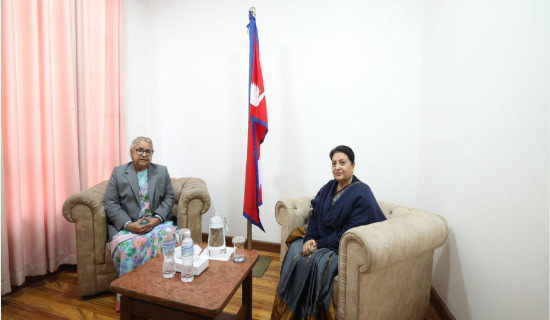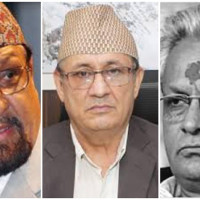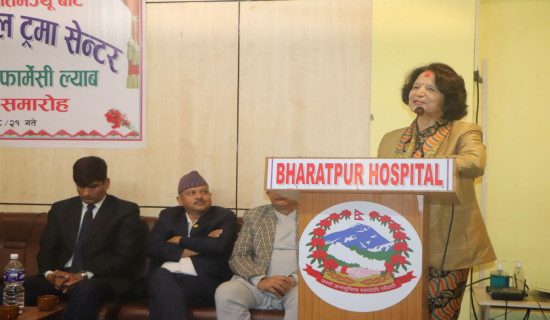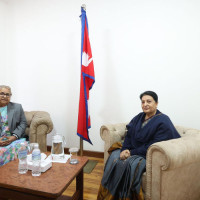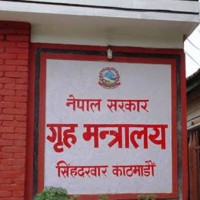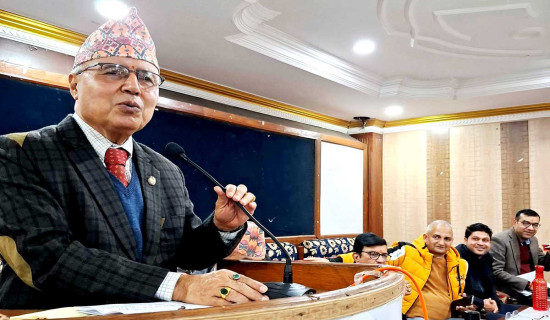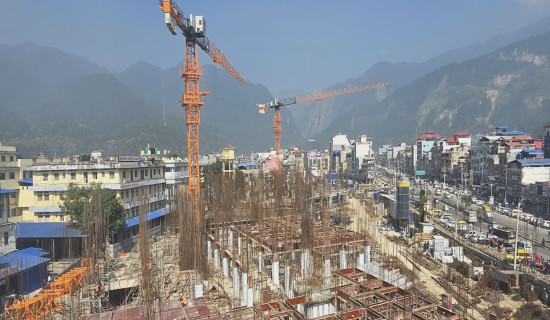- Monday, 8 December 2025
Kathmandu During 1950-60s
Kathmandu had a strange aroma then. It was the smell of dustless and unpolluted air. The freshness of the air and a slight chill was the brand of Kathmandu then. The weather in Kathmandu was heavenly. The first mist arrived just after Indrajatra, which changed to heavy fog in the mornings during Dashain and Tihar. In the winter the fog dispersed only at 01.00 or 02.00pm with a very weak sunlight giving way to darkness by 06.00pm.
Calcutta-Kathmandu was a 3-hour flight by one of the most popular aircraft known as Dakota. The plane could accommodate 27 passengers and a crew of four. The pilot, copilot, air hostess, and radio officer. The planes in service with Nepal were incapable of direct pilot-to-tower conversation and were done through the radio officer, whose seat was behind the co-pilot, in the space that is used by flight engineers in a modern jet now.
They used Morse code for communication. Later, this type of communication was discontinued, using direct pilot-to-tower conversation, and all radio officers were offered ground jobs.
The flight to Kathmandu was scenic. After the plains of India disappeared, one was greeted by a sight of thick greenery of the Char Koshe Jhadi, and one knew that we had entered Nepal. Five minutes of flying and the topography changed. The plane steered through the Chure hills and entered the valley. The valley was wide and open with rice fields, and Boudhnath Stupa stood alone in the midst of the field. A few more minutes and the aircraft landed at the airport, and we knew we were home.
The airport was then called Gauchar. A small yellow structure was the terminal building, and the aircraft landing or taking off were all Dakotas. In the late 50s, there were only Calcutta and Patna on the international route and a few domestic sectors like Pokhara and Simra. Delhi was added later. The passengers were mostly locals and a few tourists. The agent of the hotels met the tourists at the doorstep of the aircraft and solicited their hotel. The hired vehicles were mostly Jeeps and Austin and Ford cars.
Till 1958 the route in and out of Kathmandu was to fly to Simra, take the Amlekhgunj-Raxaul train, and connect wherever in India. From 1958, the Tribhuvan Rajpath Kathmandu-Bhaise came into operation, making travel easier. Nepal's national airline, Royal Nepal Airlines Corporation, came into operation the same year. The pilots of Nepal's national airlines were mostly Indian. It would take a few more years for the airlines to have 100 per cent Nepali pilots.
The most prominent among the RNAC pilots was Captain Bulsara, an Indian Parsi. With his height, fair skin, and white goatee beard, he always stood out in a crowd. A bachelor, he died in the F27 crash at the Delhi airport. In 1965, the train was withdrawn from service, and a highway was built up to Birgunj. It was possible to drive to Birgunj from Kathmandu in a single day.
The hotels were few and far between. Hotels Royal, Coronation, Snow View, Paras, and Valley were chiefly for tourists, out of which Hotel Royal was the high end. Housed in Bahadur Bhawan (now the election commission), it was run by Boris Lisanevitch, a White Russian. The hotels were non-air-conditioned and devoid of running hot and cold water. The Royal Hotel served the guests with hot water in a bucket.
The first hotel, Hotel Annapurna, planned and constructed as a hotel, opened its doors to tourists in 1965. Most hotels then were being run in Rana palaces, and Annapurna was the first hotel to offer air conditioning and running hot and cold water. After a few years, Hotel Soaltee came up as a five-star hotel with a swimming pool. The management was given to the Oberoi hotels of India, and Soaltee was more popular as Soaltee Oberoi. Lenny Dorji, the brother of the assassinated prime minister of Bhutan who was given political asylum in Nepal, ran a casino in Soaltee, making it the first casino in the Indian subcontinent. Lenny Dorji was a suave figure. He would be often seen driving a convertible Chevrolet Impala through the streets of Kathmandu.
Tourism was still at a crawling stage despite Nepal's policy of offering visas on arrival as per King Mahendra's order. By the mid-sixties, Colonel Robert had already started organised treks through his company, Mountain Travel, while John Copeman started Tiger Tops in Chitwan after the famous Tree Tops in Kenya. He would later sell the hotel to Jim Edwards. These were the first foundations of adventure travel in Nepal, which would eventually build the country's reputation as an adventure destination. By the sixties, RNAC would start the mountain flight, which became a super hit.
Fruits and vegetables were all seasonal and available only in season. For example, cauliflower was available only in winter. Cold storage was unknown, and so were off-season fruits and vegetables. The vegetables were organically grown by using animal and human dung, which gave them a massive size.
English textbooks were all Indian and had the British Raj flavour. India had her independence in 1947, and the books were not updated according to the then-present need. For example, the masculine and feminine genders in grammar went as follows:
King-Queen, Duke-Duchess, Lord-Lady, Sir-Dame, Tsar-Tsarina, Earl-Lady, etc.
A question in geography goes like this.
Q: Why is Europe more developed than Asia?
Ans: Europe is a cold place, and people can work harder. Asia is hot, and people cannot work hard enough.
The future would prove this logic worthless.
In 1958 the first election was held in Nepal, and in 1959 China took over Tibet.
Kathmandu was overrun by Tibetan refugees heading for Dharmashala, where the Indian government had sheltered the Dalai Lama. Tundikhel was a camp city. Tibetan spices like jimbu were being sold by the refugees, together with Lhasa Apso pups. The women and children would beg. Most of the Nepali Lhasa traders opted to return to Kathmandu, and they brought along two Tibetan delicacies, momo and thukpa, previously unknown in Nepal. Kathmandu itself remained calm and steadfast.
The political neutrality adopted by King Mahendra allowed the country to emerge unscathed from the 1962 India-China war.
Those days there were only four movie halls in the valley. Two in Kathmandu and one each in Patan and Bhaktapur. The fourth hall, Jansewa, in Kathmandu was burnt down by a hostile crowd after an argument with the staff. The Ashok Hall in Patan had a booking office in Kathmandu plus a shuttle service bus from Kathmandu. This bus carried moviegoers and brought them back. The movies mostly were at least three to four years old Bollywood hits, and black marketing of tickets was rampant.
Lack of vehicles made Kathmandu a silent city. The chiming of the Ghantaghar clocks could be heard all the way to Indrachowk. Those days a cannon was fired at 12 noon, and the sound could be heard in Patan. Most lands were open agricultural fields and without any construction to block the sound.
Kathmandu was a unique city in the 50s. Its temples, small two-storied houses, water sprouts, and carved windows made the city stand apart. Low houses offered the view of snow-peaked Himalaya from almost all corners of Kathmandu. In time, however, the city would turn up as a concrete jungle, and the old my kind of Kathmandu would be missed forever.
(The author is a history buff and freelance writer.)



